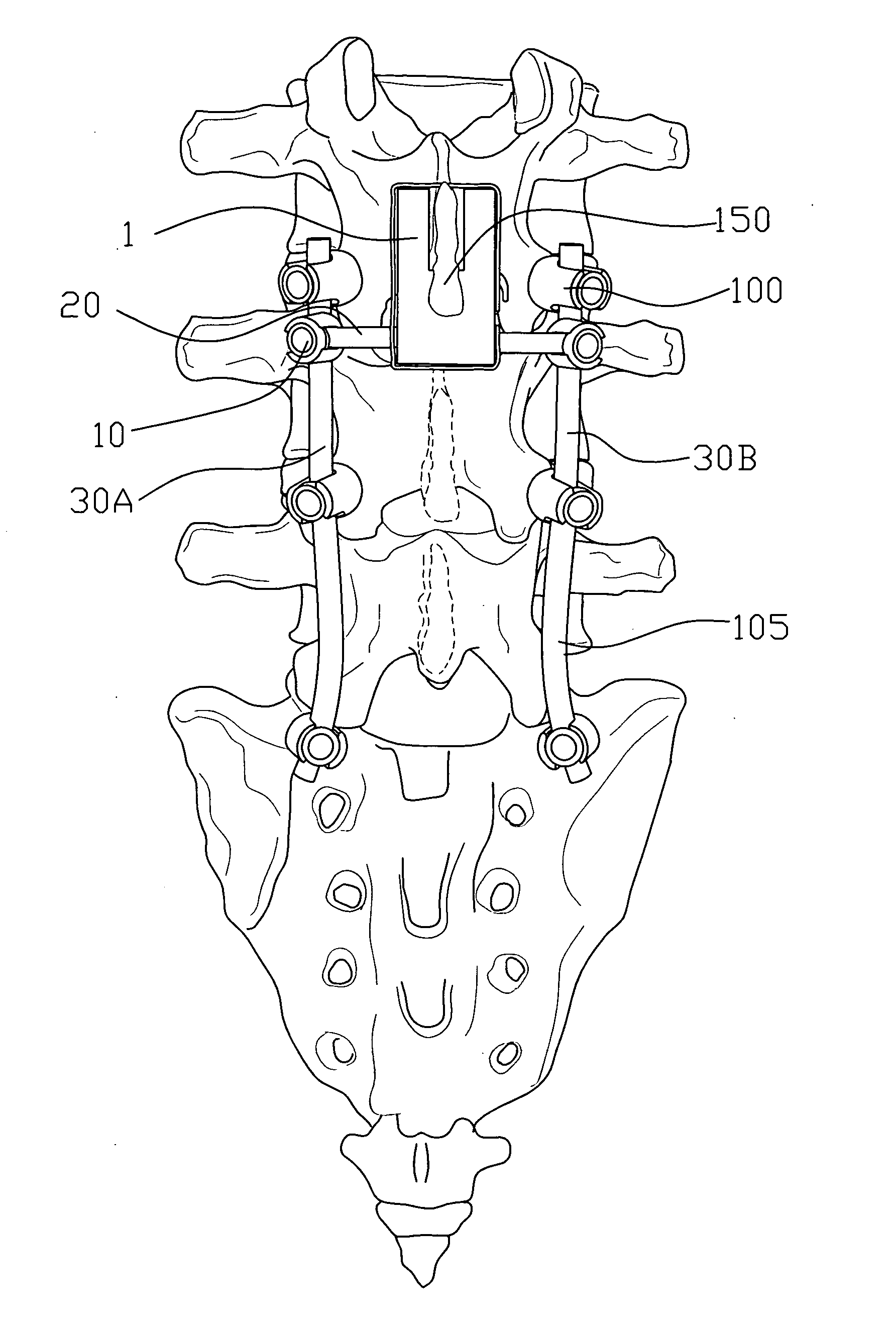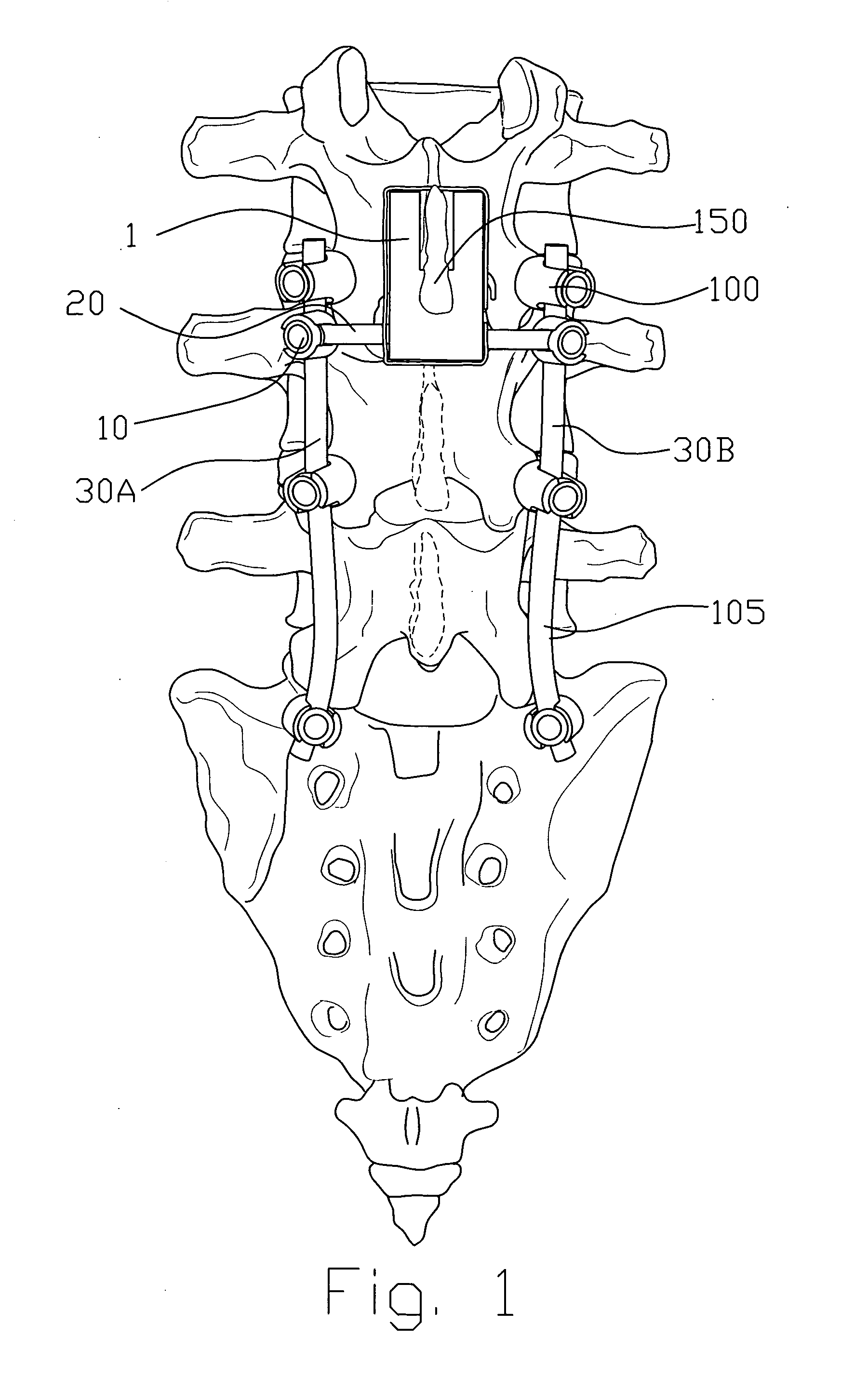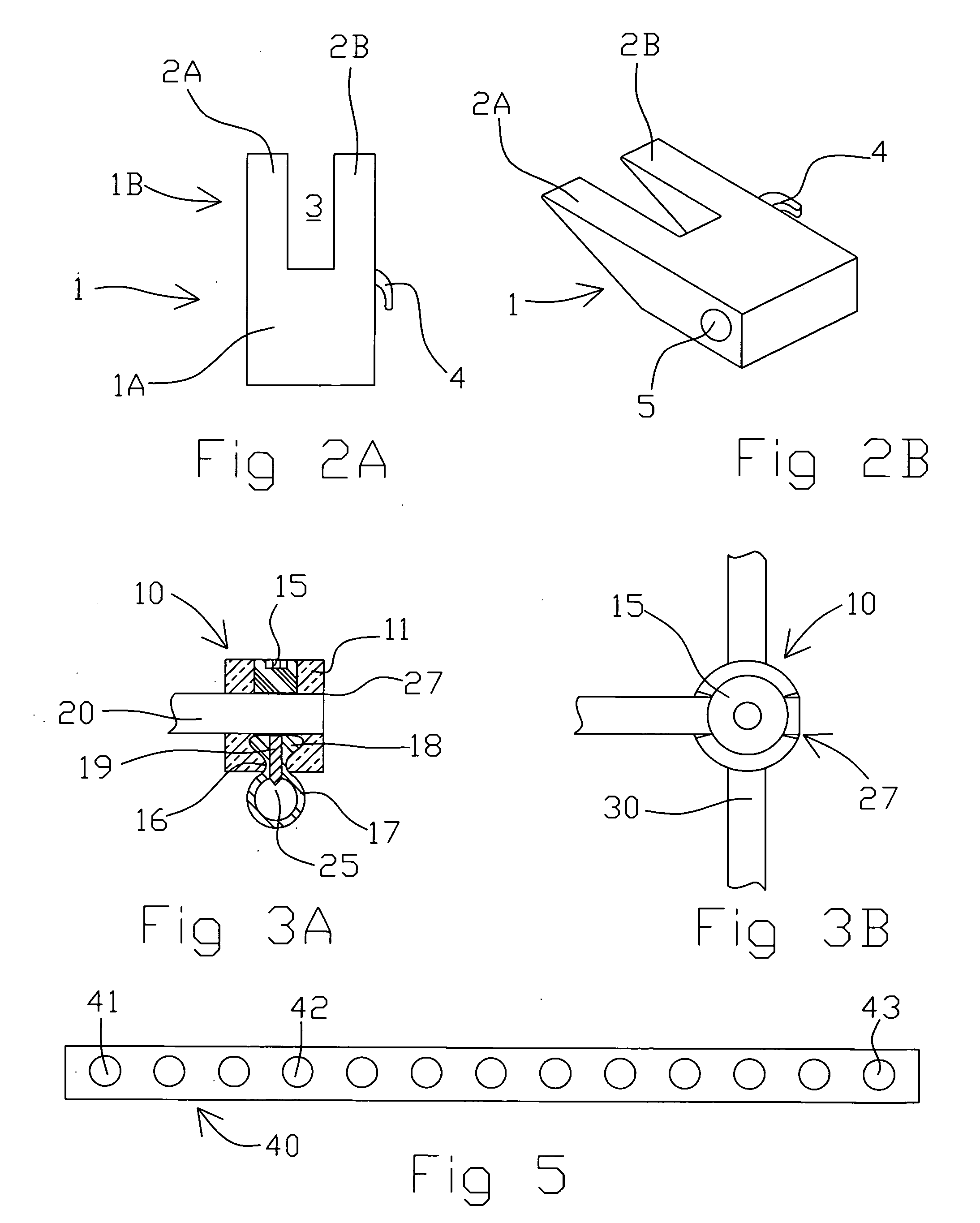Spinal implant device, procedure and system
a technology of spinal implants and fixed devices, applied in the field of medical devices and procedures, can solve the problems of prior art devices not fully blocking the extension of fused vertebrae, deteriorating vertebrae above and below the point of attachment, and limiting flexion, so as to prevent the deterioration of vertebrae and improve the quality of life
- Summary
- Abstract
- Description
- Claims
- Application Information
AI Technical Summary
Benefits of technology
Problems solved by technology
Method used
Image
Examples
first embodiment
[0031]FIG. 3A shows a cross section view of the cross connector 10. The cross connector 10 includes an orifice 27 that accommodates an end of cross member 20. A pressure exerting device such as setscrew 15 is arranged in the upper center of the cross connector 10 and mates with internal threads within the cross connector 10 to exert pressure onto the cross member 20 to secure it to the cross connector 10. The cross member 20 extends perpendicular to the vertical rods 30A-B, one of which is fastened within the second opening 25 of the cross connector 10. The second opening 25 is defined by a lower ring 17 having an upper end 18 secured within an orifice 16 and secured by a setscrew 19 which forces the upper end 18 outward. Otherwise, either rod 20, 30A-B may be fastened to the cross connector s10 via a tulip end. The tulip end may include a retaining ring, clip, wire or cam for fastening the cross connecctor to the cross member. That is the tulip end is a type of twist fastener that ...
second embodiment
[0032]FIGS. 4A-4C depict the cross connector 10. As can be understood, the cross connector 10 includes a body 11A that comprises threads for accepting setscrew 15. Otherwise, a tulip connector, as shown and disclosed in U.S. Patent Application Publication US 2006 / 0206114 A1 which is incorporated by reference hereto, may be used to exert pressure to hold either the vertical rod or cross member in place. The body 11A is preferably cup-shaped and includes a lower extension 11B that comprises a curved end 11C that accepts on of either the cross member or the vertical rod. A second setscrew 11D preferably secures vertical rod 30 into place as shown.
[0033]FIG. 5 show a strap fastener that includes a plurality of openings therein. The openings are used as discussed above for passing the cross member there through and fastening a second end of the strap fastener to the hook on the side of the block. FIG. 6 shows a bone screw assembly and vertical rod for use with the invention. The vertical...
PUM
 Login to View More
Login to View More Abstract
Description
Claims
Application Information
 Login to View More
Login to View More - Generate Ideas
- Intellectual Property
- Life Sciences
- Materials
- Tech Scout
- Unparalleled Data Quality
- Higher Quality Content
- 60% Fewer Hallucinations
Browse by: Latest US Patents, China's latest patents, Technical Efficacy Thesaurus, Application Domain, Technology Topic, Popular Technical Reports.
© 2025 PatSnap. All rights reserved.Legal|Privacy policy|Modern Slavery Act Transparency Statement|Sitemap|About US| Contact US: help@patsnap.com



